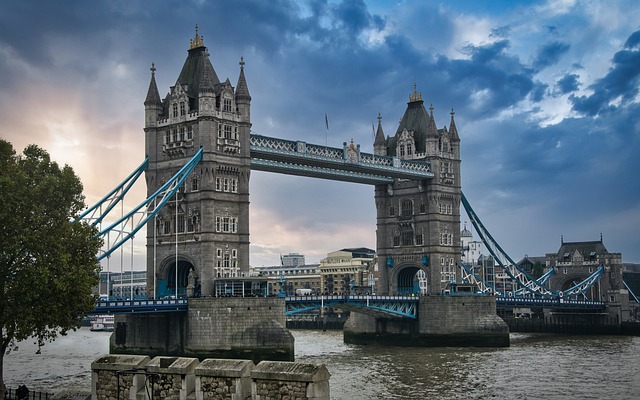Welcome to Istanbul, a city where continents meet, history unfolds, and cultures blend seamlessly into a vibrant tapestry of sights, sounds, and experiences. As one of the world’s most intriguing destinations, Istanbul offers a rich blend of ancient and modern, where centuries-old mosques and palaces stand proudly alongside bustling bazaars and chic cafes. In this article, we will explore some of the must-visit tourist attractions that capture the essence of Istanbul’s unique charm and historical significance. From the majestic Hagia Sophia and the opulent Topkapi Palace to the enchanting Grand Bazaar and the aromatic Spice Bazaar, join us on a journey through the highlights of this mesmerizing city.
Sultanahmet Square
Sultanahmet Square, also known as the Hippodrome of Constantinople, is one of the most historically significant and vibrant public spaces in Istanbul. Located in the heart of the Sultanahmet district, it is surrounded by many of the city’s most famous landmarks, making it a central hub for visitors exploring the rich history of Istanbul. Key Features..
- Obelisk of Theodosius: This ancient Egyptian obelisk was brought to Constantinople by Emperor Theodosius I in 390 AD. It originally stood at the Temple of Karnak in Luxor, Egypt, and is one of the oldest monuments in Istanbul.
- Serpent Column: Also known as the Serpentine Column, this bronze sculpture was originally part of a larger monument at the Temple of Apollo in Delphi, Greece. It was brought to Constantinople by Constantine the Great to celebrate his victory over the Persians.
- Walled Obelisk: This column, less ornate than the Obelisk of Theodosius, was constructed by Emperor Constantine VII in the 10th century. It was originally covered with gilded bronze plaques that were stolen during the Fourth Crusade.
- German Fountain: A beautiful gazebo-style fountain gifted by German Emperor Wilhelm II to the Ottoman Sultan Abdulhamid II in 1900. The fountain’s neo-Byzantine style and intricate mosaics make it a notable feature of the square.
Today, Sultanahmet Square is a bustling tourist destination and a UNESCO World Heritage site. It is flanked by significant landmarks such as Hagia Sophia, the Blue Mosque (Sultan Ahmed Mosque), and the Basilica Cistern. The square itself is a picturesque area with well-maintained gardens, benches, and pathways, making it a pleasant spot to relax and take in the historical ambiance.
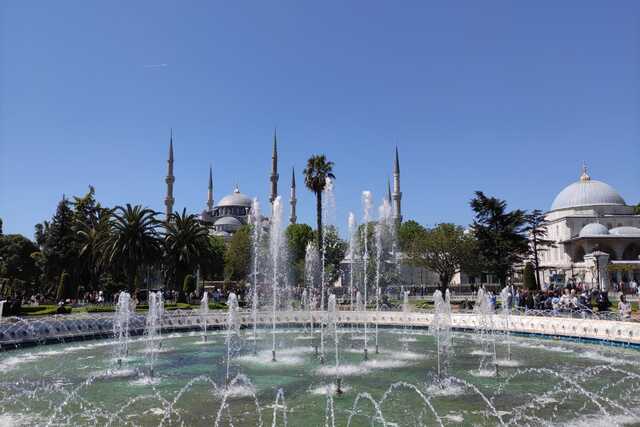
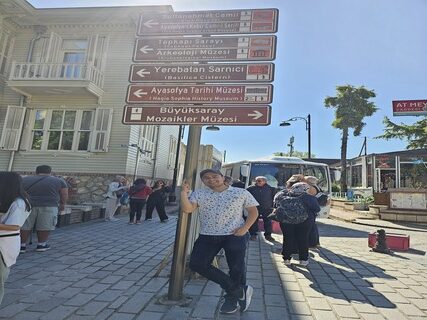
Hagia Sophia
Hagia Sophia, also known as Ayasofya, is a monumental structure with a rich history spanning over 1,500 years. Initially built as a cathedral by Byzantine Emperor Justinian I in 537 AD, it was the largest Christian church in the world for nearly a thousand years. Its massive dome, measuring 31 meters in diameter, was an engineering marvel of its time. The interior is adorned with stunning mosaics, including depictions of Christ Pantocrator and the Virgin Mary, as well as intricate marble work. After the Ottoman conquest in 1453, it was converted into a mosque, and four minarets were added. In 1935, it was secularized and turned into a museum, but in 2020, it was reconverted into a mosque. Today, it stands as a symbol of the confluence of Christian and Islamic cultures.
It is important to mention that knowing this Mosque has a cost, however it is totally worth visiting and learning about its history.
We recommend you buy your tickets in advance because the lines to enter the mosque tend to be long and with long waits, which is why in this post we leave you the best options so that you can be prepared and enjoy your entry.
There is a simple entrance, which covers the visit to the mosque where you can enjoy a tour that combines history and modernity. In this case, we advise you to enter with an audio guide in your native language, so you can have all the curiosities of the mosque at hand. You can reserve here
The second option, and the one that, without a doubt, is the best for us, is to buy the combined ticket, which comes with admission to the Hagia Sophia Museum of History and Experience, where you will get your skip-the-line ticket to the Hagia Sophia Mosque. .
In this museum you can see how the charm of the past meets the technology of the future. Immerse yourself in the beauty and complexity of this important milestone through the museum of digital experiences.
After your visit to the Hagia Sophia Museum of History and Experience, go to the mosque, just a 2-minute walk from the museum where, after learning about its history in detail, you will be able to enjoy every corner of the mosque and understand each of the designs that compose it. Book here
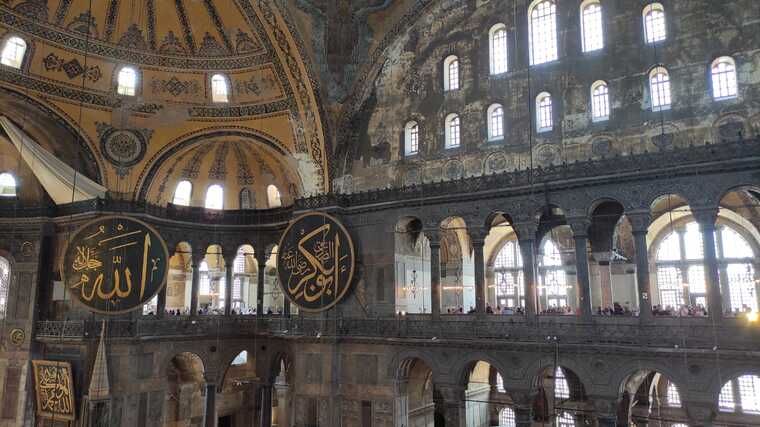
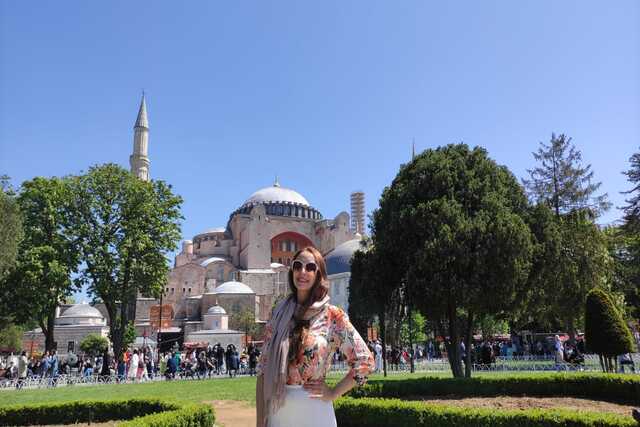
Topkapi Palace
Topkapi Palace served as the primary residence and administrative headquarters of the Ottoman sultans for almost 400 years, from the 15th to the 19th century. Situated on a promontory overlooking the Bosphorus, the Sea of Marmara, and the Golden Horn, the palace complex is a labyrinth of courtyards, pavilions, and gardens. Highlights include the Harem, where the sultan’s family lived; the Treasury, which houses the famous Topkapi Dagger and the 86-carat Spoonmaker’s Diamond; and the Pavilion of the Holy Mantle, which contains sacred relics such as the Prophet Muhammad’s cloak and sword. The palace is also home to exquisite collections of Ottoman ceramics, manuscripts, and miniatures.
Like our previous recommendation, entry to the palace also has a cost, we leave you the best option, where you can enjoy an exclusive guided tour, where you can delve into the secrets of the Harem. With this ticket you will not have to wait in lines and you will be able to walk through the interior of the palace exploring its crafts and sacred relics, as well as enjoying its beautiful gardens. You can reserve here.
Something important to keep in mind is that the palace does not open its doors to tourists and visitors on Tuesdays, so we recommend that you schedule your time very well, so that you can enjoy this wonderful place and not be left feeling disappointed for not having attended. previously reported.
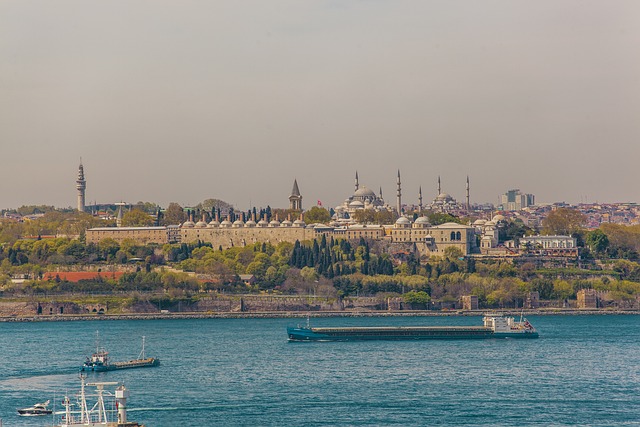
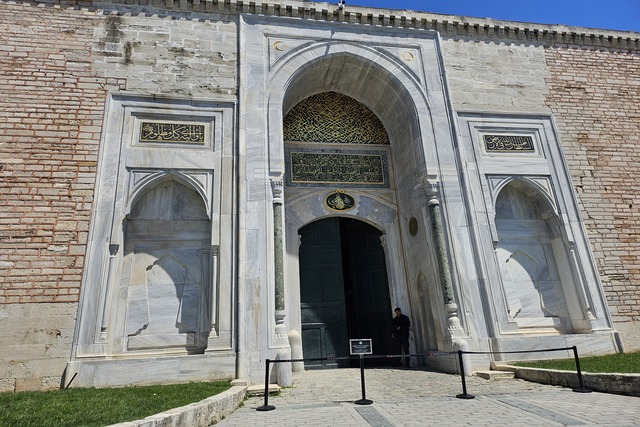
Basilica Cistern
The Basilica Cistern, or Yerebatan Sarnıcı, is an ancient underground water reservoir built in the 6th century by Byzantine Emperor Justinian I. Measuring 138 meters long and 64.6 meters wide, it can hold up to 80,000 cubic meters of water. The cistern is supported by 336 marble columns arranged in 12 rows of 28 columns each. One of its most intriguing features is the two Medusa heads used as column bases, which are believed to have been repurposed from an earlier Roman structure. The cistern’s atmospheric lighting and the sound of dripping water create a mystical ambiance, making it a popular tourist attraction.
Some important information about this wonderful place is that it is the size of a cathedral, and previously its water reserve was connected to a reserve near the Black Sea through 20 kilometer aqueducts.
Keep in mind that to reach the deepest part of the cistern you will have to descend the 52 stone steps, but without a doubt being in its depth will leave you breathless, don’t miss the medusa heads that support two of its columns and learn about Greek mythology.
The entrance to the Basilica Cistern has a very comfortable cost for all of us, so if you want to visit this majestic place I leave you three recommendations that can adapt to your pocket and will give you an unforgettable experience.
- Recommendation 1: Istanbul-Basilica Cistern Express Entry with Audio Guide Book Here
- Recommendation 2: Istanbul-Visit to the Basilica Cistern and skip the line with a guide Book Here
- Recommendation 3: Istanbul-Skip-the-Line Guided Tour of the Basilica Cistern Book Here
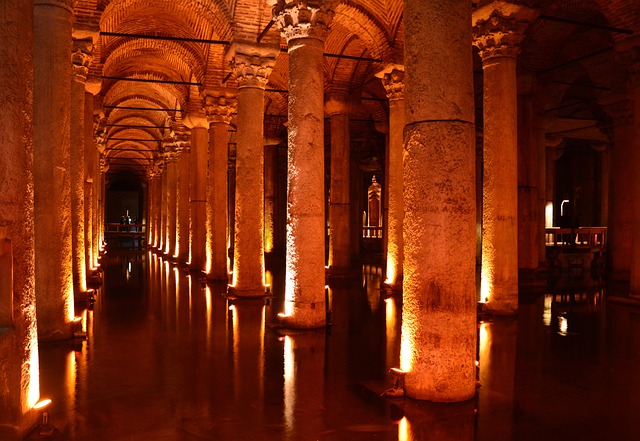
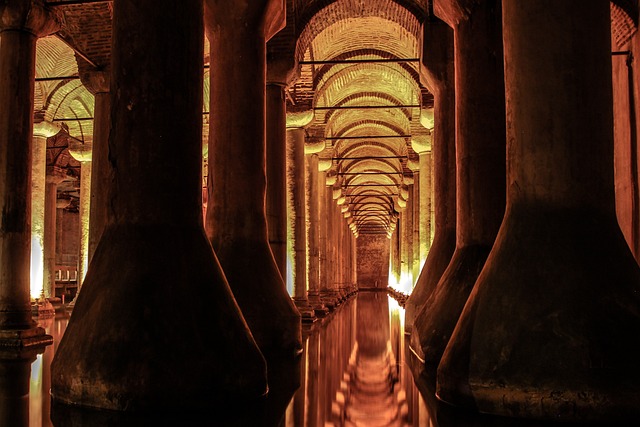

Dolmabahce Palace
Dolmabahce Palace, located on the European shore of the Bosphorus, is a stunning example of Ottoman Baroque architecture. Built between 1843 and 1856 by Sultan Abdülmecid I, it served as the main administrative center of the Ottoman Empire in its later years.
The palace boasts 285 rooms, 46 halls, and 6 baths, with opulent decorations including gold leaf, crystal chandeliers, and rich carpets. The Ceremonial Hall, with its 36-meter-high dome and enormous crystal chandelier weighing 4.5 tons, is particularly impressive. The palace also houses a large collection of European art and furniture, showcasing the sultan’s efforts to modernize the empire.
To visit the Palace you must bear in mind that, like the previous ones, this also has a cost and you must consider whether you prefer the guided entrance or with an independent audio guide, what if you cannot think about is whether to go or not, because in reality it is an unparalleled experience. If you want to do a complete visit that includes tickets and exclusive guide in small groups, you can Book here
On the contrary, if you are one of those who enjoys taking your time and repeating the information you have at your disposal, no problem, you will find the best option for you Booking here. A very important recommendation is that you bring your tickets purchased in advance because this is a tourist site that is usually very visited, so you do not want to be left without tickets, so follow the advice and book and get to know this Turkish wonder.
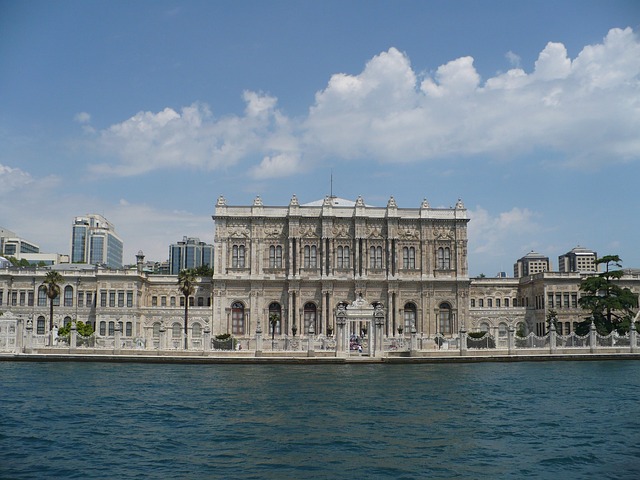
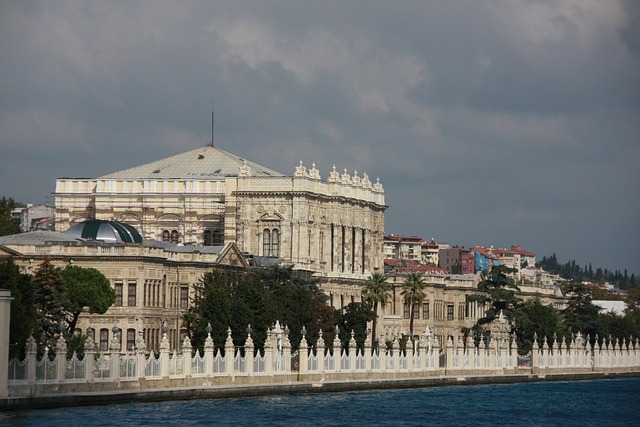
Bosphorus Bridge
The Bosphorus Bridge, now officially known as the 15 July Martyrs Bridge, is one of the three suspension bridges spanning the Bosphorus Strait, connecting the European and Asian sides of Istanbul. Completed in 1973, it was the first bridge to connect the two continents.
The bridge is 1,560 meters long and has a main span of 1,074 meters. It offers spectacular views of the Istanbul skyline and the Bosphorus, especially at night when it is illuminated with colorful lights. The bridge is also a symbol of Istanbul’s blend of traditional and modern influences.
This suspension bridge is one of the most significant symbols of modern Turkey and plays a crucial role in the city’s infrastructure.
The idea for a bridge spanning the Bosphorus dates back to antiquity, but it wasn’t until the 20th century that serious plans were made. The bridge was constructed to alleviate traffic congestion and improve connectivity between the two continents.
The Bosphorus Bridge remains an engineering triumph and a testament to Turkey’s progress, providing a vital link that enhances the city’s connectivity and serves as a powerful symbol of Istanbul’s unique position straddling two continents.
It is clear that entry to this bridge is completely free because it is essential for transportation in Istanbul, however, if you would like to observe it in a different way and take home its best postcard, we recommend taking the Bosphorus cruise, which you can decide if Do it at night and also enjoy a Turkish show with a private dinner or do it at sunset, which in Istanbul never disappoints, it is actually very beautiful and one of the best we have been able to see.
If you want to book the night cruise you can do it here, this experience is wonderful and you will enjoy the best Turkish cuisine. But if you are one of those who collects sunsets, you can reserve here. These two super plans will allow you to observe the engineering work that characterizes the Bosphorus Bridge.

Sultan Ahmed Mosque
The Sultan Ahmed Mosque, commonly known as the Blue Mosque due to the blue tiles that adorn its interior walls, is one of Istanbul’s most iconic landmarks. Located in the historic Sultanahmet district, this grand mosque stands directly opposite Hagia Sophia and close to the Topkapi Palace, making it a central part of Istanbul’s historic skyline.
The mosque was built between 1609 and 1616 during the reign of Sultan Ahmed I, who wanted to build a monument that would rival Hagia Sophia. The construction was overseen by the architect Sedefkar Mehmed Agha, a student of the great architect Mimar Sinan.
The mosque was intended not only as a place of worship but also to assert Ottoman power and leave a lasting legacy. It was part of a larger complex that included a madrasa (Islamic school), a hospice, a library, and a bathhouse.
The mosque is renowned for its six minarets, an unusual feature as most mosques have four or fewer. The main dome is flanked by four semi-domes, creating a cascading effect. The central dome is 23.5 meters in diameter and 43 meters high at its peak. The interior is covered with over 20,000 handmade İznik ceramic tiles in various shades of blue, which give the mosque its popular name. These tiles are arranged in more than fifty different tulip designs, among other floral and geometric patterns.
The walls are decorated with verses from the Quran, written by the famous calligrapher Seyyid Kasim Gubari. The mosque also features 260 stained glass windows, which enhance the natural light and create a serene and ethereal atmosphere inside.
As you can see, visiting this mosque should undoubtedly be on your list of must-see places and the best of all is that by 2024 they are not charging for entry, it is completely free. Something that you should take into account is your dress code, in the case of women, you must attend in a skirt below the knees, with covered shoulders and you must wear a scarf to cover your head; In the case of men, it is preferable that they wear long pants and shirts or t-shirts that cover their shoulders. You will also have to keep in mind that to enter they will make you take off your shoes, so it is recommended to bring a double pair of socks, because although the floor is carpeted, in some parts you will find humidity and you will not want to spend the rest of the afternoon completely wet.
Although entry to the Blue Mosque is free, if you are one of those who loves history, I leave you the link to the best guided tour you will find so you don’t miss any details of this beautiful and imposing mosque.
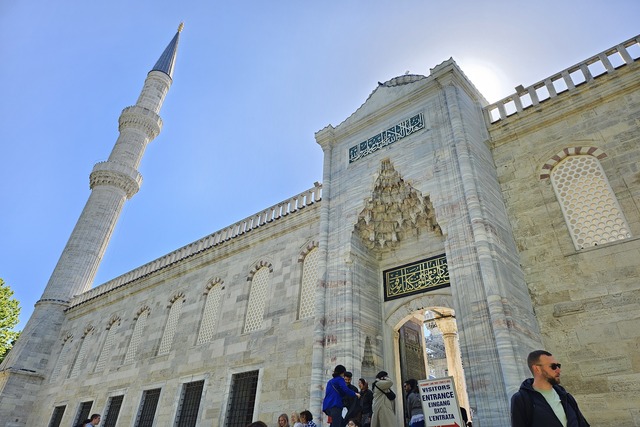
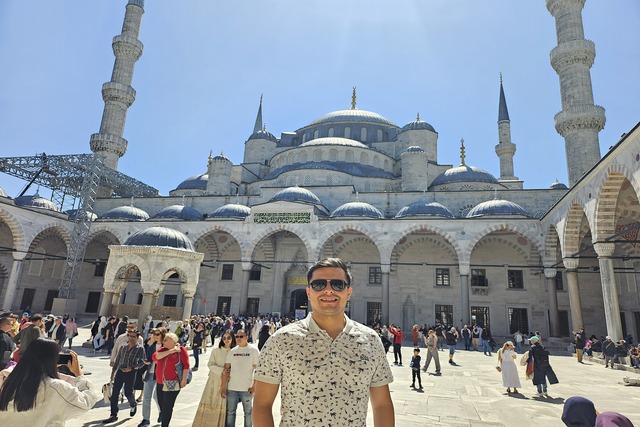
Galata Tower
The Galata Tower, a medieval stone tower in the Galata/Karaköy quarter, was built in 1348 during the Genoese colony’s expansion in Constantinople. Originally called the Tower of Christ, it was the tallest building in the city at the time, standing at 67 meters. The tower offers panoramic views of Istanbul and the Bosphorus from its observation deck. Throughout its history, it has served various purposes, including as a watchtower, a lighthouse, and a fire lookout. Today, it houses a restaurant and café, making it a popular spot for tourists to enjoy the cityscape.
Some curious facts are that the cylindrical tower has nine floors and is built of stone. It has a conical roof that was restored in the 60s. The diameter of the tower is about 16.5 meters at the base. Furthermore, according to Ottoman legend, in the 17th century Hezarfen Ahmet Çelebi flew from the Galata Tower across the Bosphorus to the Asian side using artificial wings, a feat celebrated in Turkish folklore.
Likewise, the tower has undergone several restorations over the centuries. The most significant restoration occurred in the 1960s when it was opened to the public as a tourist attraction. You should know that the Galata Tower has appeared in numerous works of art, literature and films, and symbolizes the rich history and cultural heritage of Istanbul, which is why it is a place that you cannot miss. As I told you before, the tower offers beautiful views, so if you want to get one of the best postcards of Istanbul you can buy your ticket here
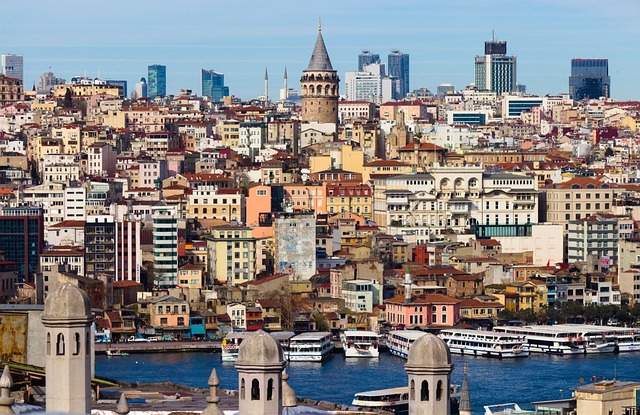
Grand Bazaar
The Grand Bazaar, or Kapalıçarşı, is one of the largest and oldest covered markets in the world, dating back to the 15th century. It spans 61 covered streets and houses over 4,000 shops, attracting hundreds of thousands of visitors daily. The bazaar offers a vast array of goods, including jewelry, carpets, spices, textiles, antiques, and souvenirs. Its labyrinthine layout, vibrant atmosphere, and rich history make it a fascinating place to explore. Visitors can also enjoy traditional Turkish tea or coffee at one of the many cafés scattered throughout the bazaar.
A curiosity about this Grand Bazaar, or Kapalıçarşı, is that it was established in 1455, shortly after the Ottoman conquest of Constantinople. Sultan Mehmed II ordered its construction to stimulate economic growth and solidify Ottoman control.
Over the centuries, the bazaar expanded significantly, especially during the reign of Sultan Suleiman the Magnificent in the 16th century. It became one of the most important commercial centers of the Ottoman Empire.
One fact that you cannot miss is that the bazaar extends across 61 covered streets and has more than 4,000 stores. It is designed like a labyrinth, with several hans (inns) and caravanserais integrated into its structure. There are 22 entrances to the bazaar, the main gates being Beyazıt Gate and Nuruosmaniye Gate. These doors lead to the bustling market filled with shops selling a wide variety of products. The bazaar is covered by numerous domes and vaulted ceilings, many of which are adorned with intricate designs and calligraphy.
Bargaining is a common practice in the Grand Bazaar and customers are expected to negotiate prices with the merchants, so don’t be surprised if they hear you talking and immediately start negotiating in your native language, the Turks defend themselves in all languages when offering their crafts, sweets and treasures. It has always played a vital role in the social and economic life of Istanbul.
Admission to the Grand Bazaar is completely free, but if you wish you can take a guided tour where you can explore all its stories and delve into Turkish culture. One piece of advice is to take it easy, enjoy being in the largest and oldest bazaar in the world, try all its Turkish delights and don’t forget to take your tea set, without a doubt you will take home a nice memory of this beautiful city.
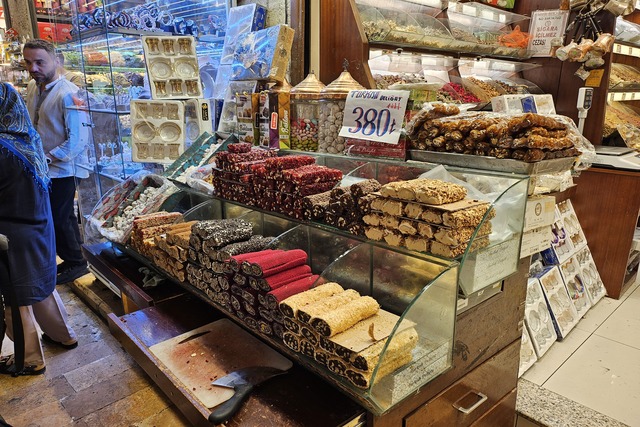
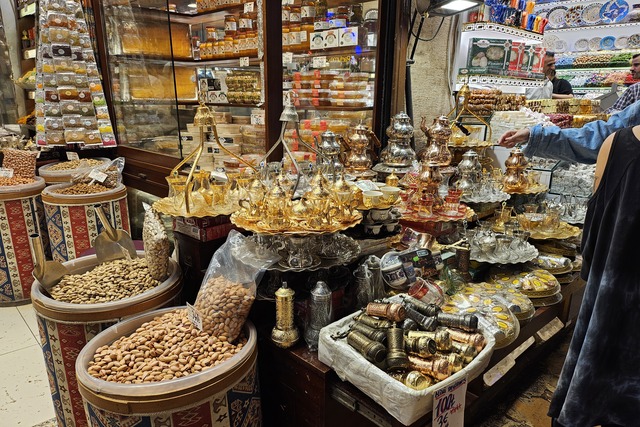
Spice Bazaar
The Spice Bazaar, also known as the Egyptian Bazaar, is one of Istanbul’s most famous covered markets. Built in 1664, it was originally funded by taxes levied on Egyptian imports, hence its name. The market is a sensory delight, with stalls overflowing with colorful spices, dried fruits, nuts, teas, and Turkish delights. It is a great place to buy culinary souvenirs and experience the flavors and aromas of Turkey. The L-shaped market building is also home to various shops selling textiles, ceramics, and jewelry.
The bazaar is characterized by its arched ceilings and domes, with intricate Ottoman architectural details. The interior is bright and airy, creating a welcoming atmosphere for shoppers.
The Spice Bazaar is a sensory delight with its vibrant colors and rich aromas of various spices and herbs. The aroma of saffron, cinnamon and clove fills the air, creating an unforgettable shopping experience.
Like the Grand Bazaar, the Spice Bazaar has faced challenges such as fires and earthquakes. However, it has been restored and preserved, maintaining its historic charm and functionality.
The bazaar has always been a crucial part of Istanbul’s commercial life. It served as a meeting place for merchants and merchants from different parts of the world, contributing to the cultural and economic exchange that has shaped Istanbul.
You should know that visiting this bazaar is a charm, you will want to take all kinds of tea and nuts for your country of origin, plus the entire visit is free, so prepare your pocket because you will want to buy and buy.
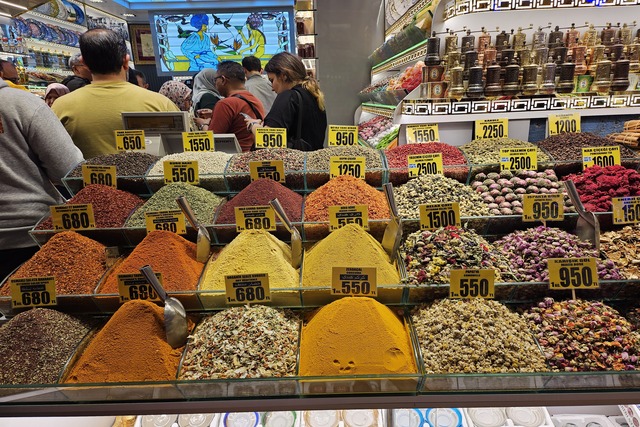
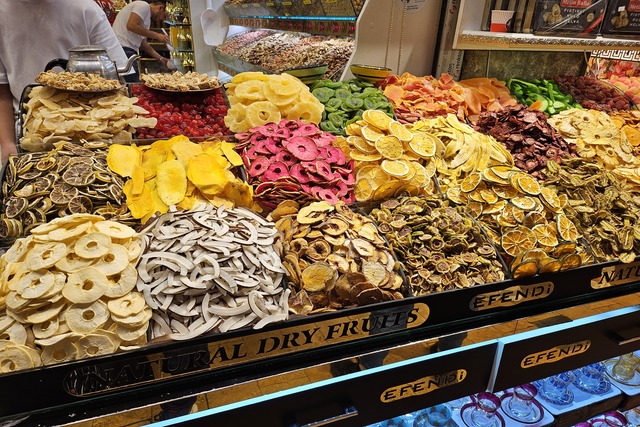
Istanbul is a city that captivates the heart and soul of every traveler who sets foot within its bounds. Its unparalleled blend of history, culture, and modernity creates an experience that is both deeply enriching and wonderfully diverse. Whether you are marveling at the architectural splendor of the Blue Mosque, enjoying panoramic views from the Galata Tower, or immersing yourself in the vibrant hustle and bustle of the Grand Bazaar, each moment spent in Istanbul is a step through time and tradition. As you leave this enchanting city, you’ll carry with you memories of its beauty, the warmth of its people, and a profound appreciation for its role as a bridge between the past and the present, the East and the West. Istanbul is not just a destination; it’s an unforgettable adventure.
